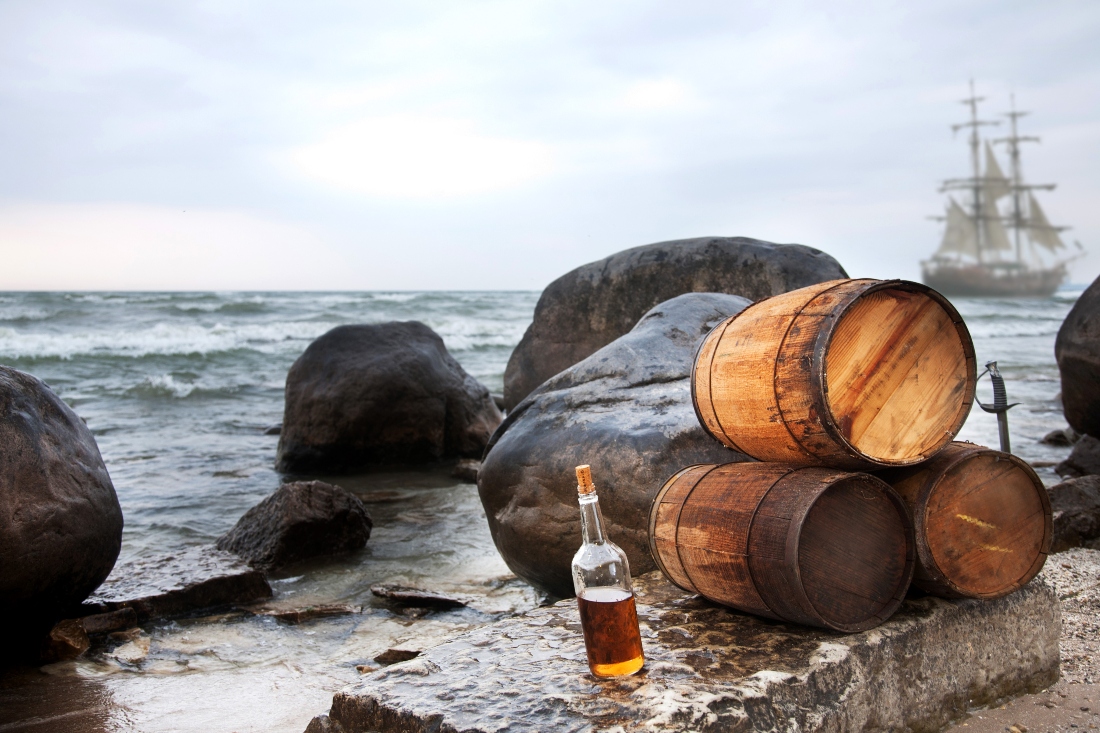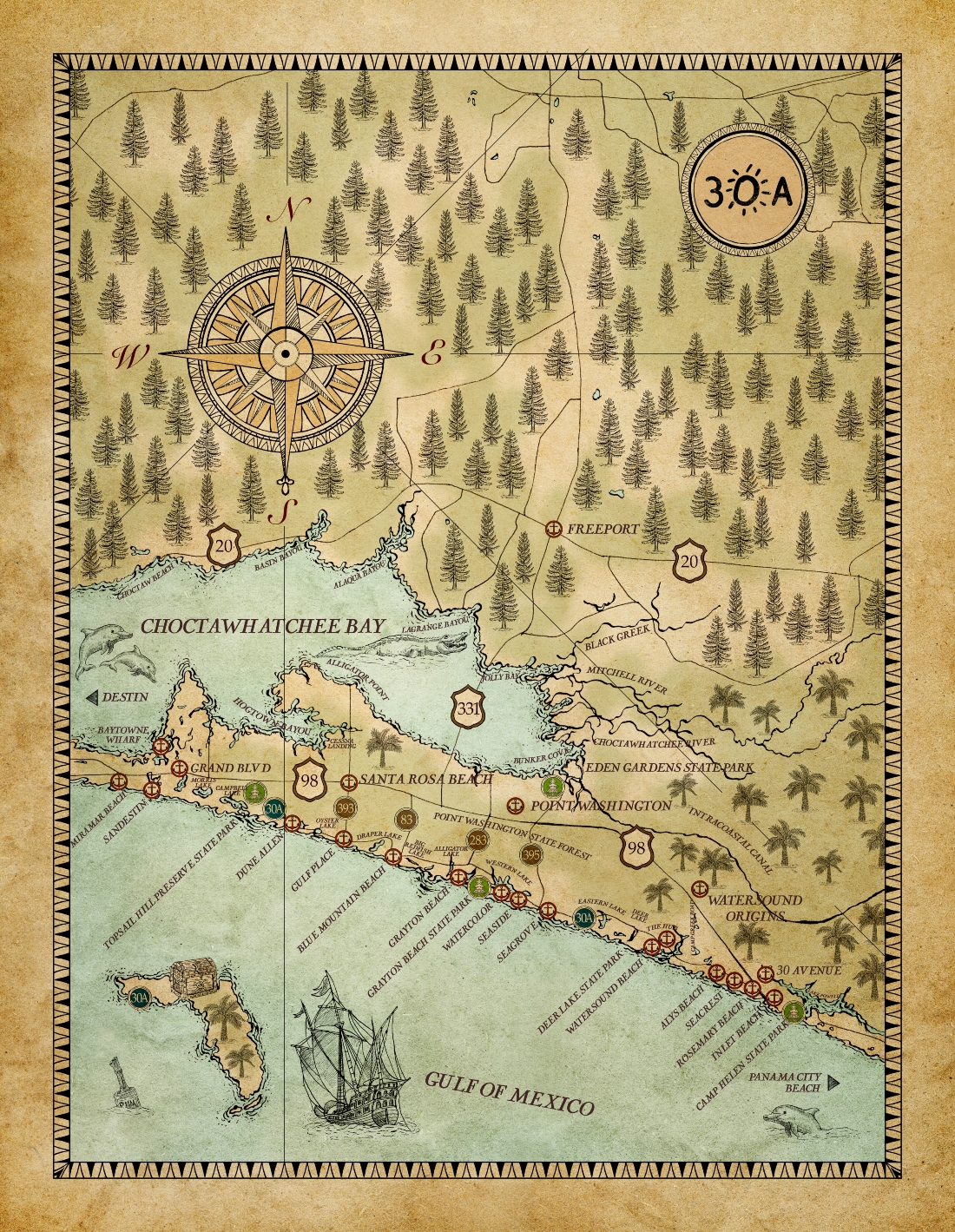We all know the old cliché pirate stereotypes: one-eyed swashbuckling adventurers with a penchant for treasure, planks, parrots, peglegs, pillaging, and, of course, copious amounts of rum. But how did these seafaring scoundrels become so intertwined with this sugarcane-based spirit? Grab a tankard of grog, and let’s dive into the storied history of pirates and their liquid treasure: rum.
What is now referred to as “The Golden Age of Piracy” took place between the late 17th and early 18th centuries. It was a time of cutthroat competition on the high seas, and the Caribbean was teeming with pirates eager to plunder ships carrying valuable cargo. Coincidentally (or not), the Caribbean was also the epicenter of rum production, with sugar plantations churning out molasses by the barrelful. This sweet by-product was distilled into rum, a cheap and plentiful beverage that quickly became the go-to drink for sailors and pirates alike.
Sugarcane, the raw material for rum, was brought to the Caribbean by European colonizers during the early 16th century. The Caribbean’s climate proved ideal for growing sugarcane, and soon, plantations sprung up throughout the region, producing large quantities of sugar and its by-product, molasses. The first recorded instance of rum production dates back to the 17th century in Barbados, where plantation owners found that fermenting and distilling molasses resulted in a potent, albeit rough, spirit.
This early version of rum was known as “kill-devil” or “rumbullion,” which gives you an idea of its less-than-refined taste.
Over time, distillation techniques improved, and rum began to develop a more polished flavor profile. It wasn’t long before the spirit gained popularity beyond the Caribbean, eventually making its way across the Atlantic to the American colonies. In fact, rum became so popular that it played a key role in the infamous “triangular trade” – a complex network of exchanges involving sugar, molasses, rum, and slaves between the Caribbean, Europe, and the American colonies.

Despite its dark associations with the slave trade, rum enjoyed widespread popularity in colonial America. Taverns and inns throughout the colonies served rum, and the spirit was even used as a form of currency in some instances. It’s estimated that, at its peak, the average American colonist consumed more than three gallons of rum per year.
For pirates, rum was also something of a multitasker. Not only did it provide an essential morale boost after a long day of looting and pillaging, but it played a crucial role in preserving and sterilizing water on long voyages. The high alcohol content of rum killed off bacteria and algae, making it safer to drink, which was especially important considering the scarcity of fresh water aboard ships. Pirates also believed that a healthy swig of rum would help stave off scurvy, though we now know that citrus fruits were the real heroes in that micro-battle.
Of course, pirates weren’t the only ones who appreciated a good dram of rum. The British Royal Navy issued daily rum rations to their sailors until as late as 1970. Known as a “tot,” this daily allotment consisted of a half-pint of rum, watered down with an equal amount of water to create “grog.” It’s said that Admiral Edward Vernon, who introduced the practice of diluting rum rations, earned the nickname “Old Grog” due to his grogram cloak. The name “grog” stuck for the watered-down rum mixture.
As for pirates, their love affair with rum was not limited to simply drinking it. They also used the spirit as a means of bonding and sealing deals.
In a ritual known as “Blackbeard’s Toast,” pirates would mix together gunpowder and rum in a communal bowl, and each would take a swig to demonstrate their loyalty and commitment to the pirate life.
The practice was as dangerous as it was symbolic – ingesting gunpowder could cause severe gastrointestinal distress, but to pirates, it was a small price to pay for camaraderie and solidarity.

The Golden Age of Piracy eventually waned as nations increased their naval presence in the Caribbean and cracked down on the sea-faring scoundrels. The rum-soaked days of plunder and adventure gave way to more organized and regulated maritime trade, and the once-ubiquitous wooden pirate ships faded into the realm of legend and lore.
As for rum itself, its fortunes have risen and fallen over the centuries. The spirit’s popularity waned in the late 18th and early 19th centuries as whiskey and bourbon took center stage in America, but it experienced a resurgence in the early 20th century with the rise of tiki culture and the invention of cocktails like the Daiquiri and the Mojito. Today, rum remains a staple of the spirits world, with artisanal distilleries producing a wide range of styles and flavors, from the light and refreshing to the dark and complex.
Through the centuries, rum has evolved from a rough, unrefined spirit to a beloved and sophisticated beverage that continues to captivate drinkers today. While the days of pirate ships and buried treasure may be long gone, we can still raise a glass of rum in honor of those devilishly daring rogues and their undying love for the spirit that fueled adventures and legends.

For more fun, beachy stories, check out Beach Happy Magazine.

